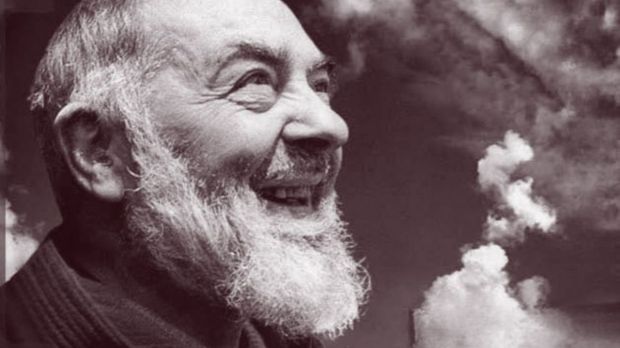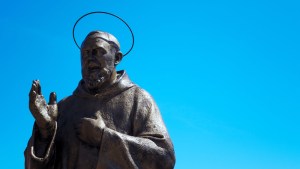It is said that one cannot fully know someone else without visiting the place where he or she grew up. This is one of the reasons why Christians go on pilgrimage to the Holy Land. There is something powerful about walking where Jesus walked and touching his land. St Jerome is credited with saying: “Five gospels record the life of Jesus. […] Read the fifth gospel and the world of the four will open to you.”
The same is true with the saints. Like Christ who was formed in his humanity in his hometown of Nazareth, the saints, too, led human lives like ours. Their personalities, characters, and spiritualities were all influenced by a variety of social, familial, and environmental factors and stimuli.
In my new book, Following Padre Pio: A Journey of Discovery from Pietrelcina to San Giovanni Rotondo, I sought to come to know Padre Pio in this way: by exploring his hometown in addition to the 10 friaries he lived or stayed in.
For my research, I made Pietrelcina my base and visited two or three sites each day. Padre Pio’s native village is the singularly most important site related to his early life, as he was born here on May 25, 1887, (baptized Francesco Forgione), and grew up. Further, entering the order in 1903, he returned to his hometown on numerous occasions for health reasons (1909-1916). During one such period, on October 10, 1915, he received the temporary, or invisible, stigmata.
Francesco Forgione left home on January 6, 1903, to enter the Capuchin Order in the Province of Sant’Angelo (now renamed the Province of Padre Pio and Foggia). Before his permanent assignment to San Giovanni Rotondo (1918), he was assigned to 10 friaries for studies or health reasons. They are:
- Morcone (novitiate: 1903-1904)
- Sant’Elia a Pianisi (rhetoric: 1904-1907)
- Campobasso (to assist in a liturgy: 1905; for health reasons: 1909)
- Serracapriola (sacred theology: 1907-1908)
- San Marco la Catola (philosphy: 1905-1906)
- Montefusco (sacred theology: November 1908)
- Gesualdo (moral theology: November-December 1909)
- Venafro (health reasons: October-December 1911)
- Foggia (to comfort a dying tertiary: 1916-17)
- San Giovanni Rotondo (health reasons: 1916; permanent reassignment: 1918-1968)
As I visited these sites, I learned much about Padre Pio. The first thing I realized was just how large Padre Pio’s province was (and is). It comprises three Italian regions including Puglia, Campania, and Molise. To visit all the sites, I drove more than 1,500 kilometers (930 miles).
Next, I was struck by the locations of the friaries. The Capuchin Order was founded in the 16th century as a Franciscan order based on hermitage and penance. As such, Capuchin friaries were originally located in remote – sometimes mountainous – sites (though many today have been encroached by modern, urban sprawl). Additionally, many roads in rural Southern Italy are not in good condition. All this made my daily outings quite adventurous, to say the least.
What I discovered in each friary, on the other hand, vastly outweighed the challenges of getting there. All the cells where Padre Pio lived have been preserved with vintage furnishings to make them look exactly like they were in the early 20th century when he was there. Additionally, each site has a small museum with relics and artefacts from his life.
But the real highlight of my visits was the friars, sisters, and laypersons I met along the way. All had stories to tell – mostly from the oral tradition. One friar even knew Padre Pio personally and was in San Giovanni Rotondo when he died. Their testimonies are the highlight of the book.
As I concluded my pilgrimage to the friaries of Padre Pio, I realized just how much Padre Pio was the progeny of a people. He was formed by those of his native town, as well as the friars of the Capuchin Province of Sant’Angelo. Visiting the sites personally and getting to know the Capuchin friars who carry on his legacy in each site was a blessing I will cherish for a lifetime.
Following Padre Pio: A Journey of Discovery from Pietrelcina to San Giovanni Rotondo is available on Amazon in paperback, hardbound, and ebook formats.


